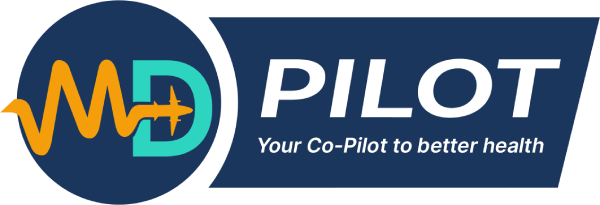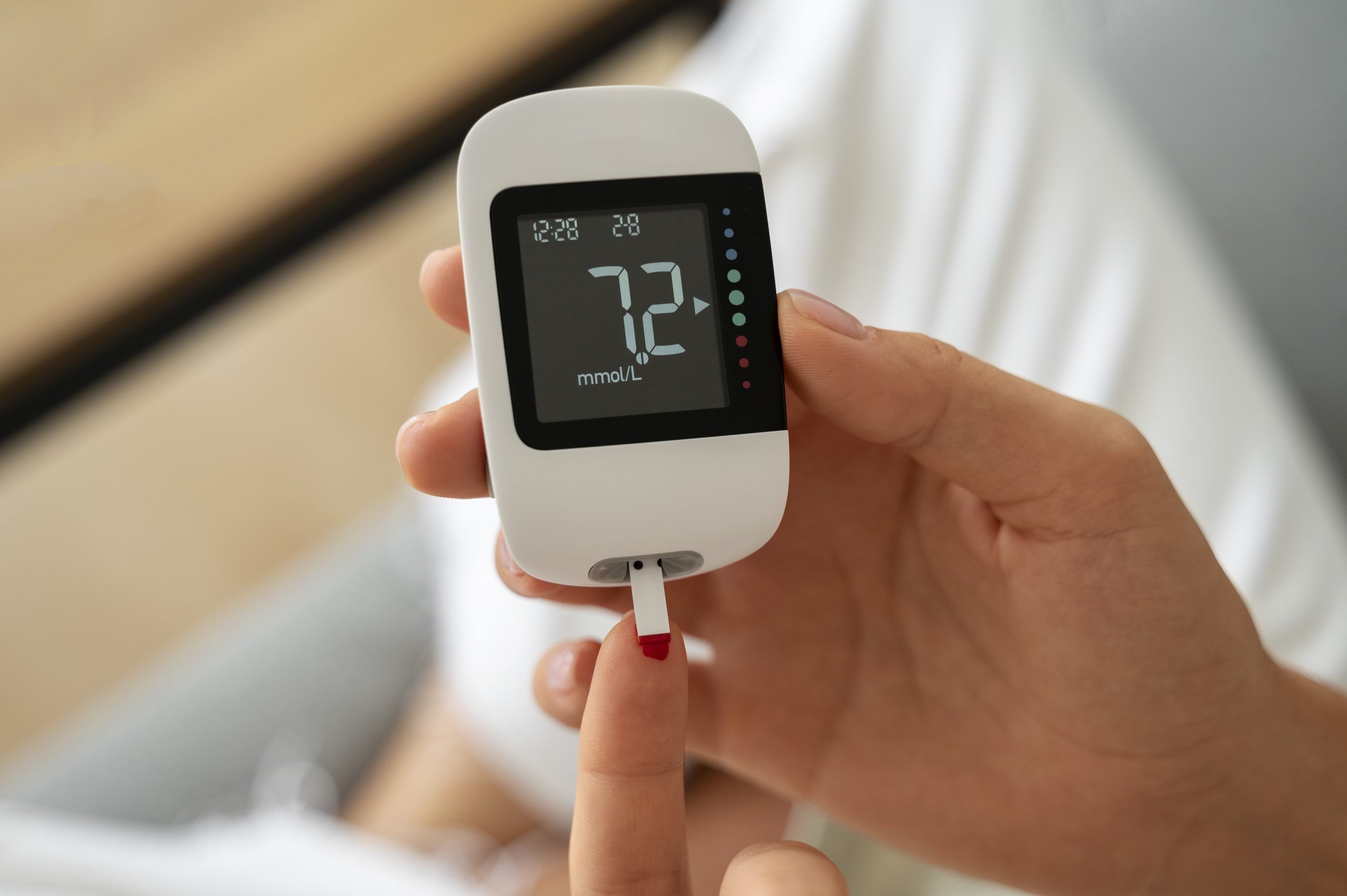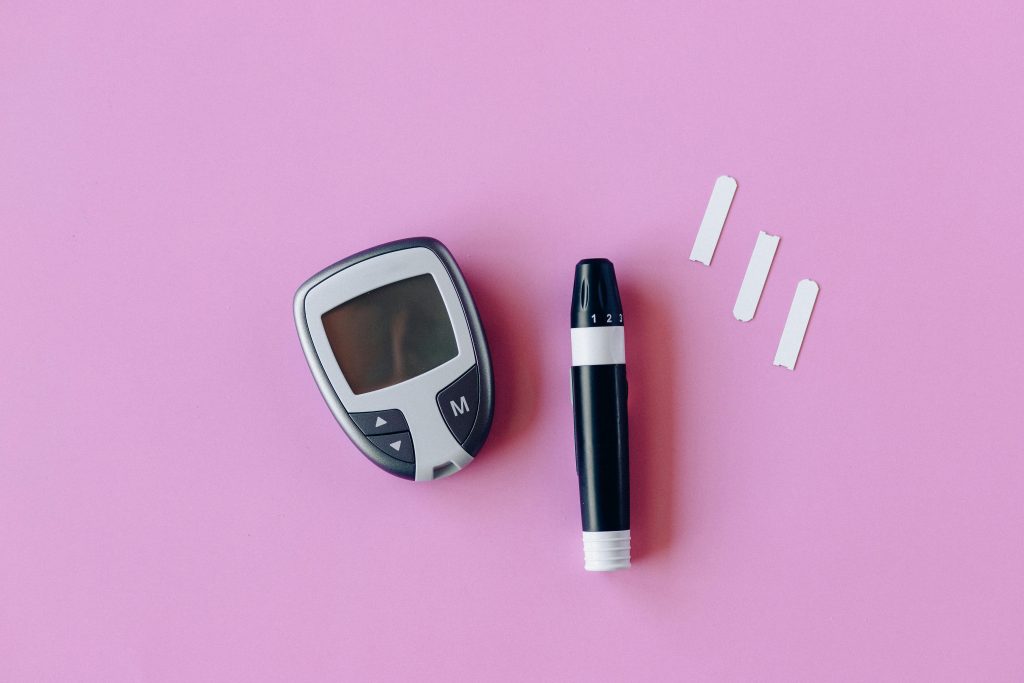Table Of Contents
-
Key Highlights
- Understanding Blood Sugar Ranges: What's Normal and What's Not
- What Does a 116 Blood Sugar Level Mean? (Fasting vs. After Eating)
- Causes of a Blood Sugar Reading of 116
- 116 Blood Sugar: Prediabetes, Diabetes, or Normal?
- What To Do If Your Blood Sugar Is 116
- How to Lower Your Blood Sugar and Reduce Diabetes Risk
-
Frequently Asked Questions About 116 Blood Sugar
-
Conclusion: Taking Control of Your Health Journey
-
References
Key Highlights
- A fasting blood sugar of 116 mg/dL typically falls in the prediabetes range according to ADA and WHO guidelines
- After-eating values are different: 116 mg/dL measured 2 hours after a meal is generally considered normal (target: less than 140)
- Not immediately dangerous: 116 mg/dL isn’t a crisis but signals the need for lifestyle changes and regular monitoring
- Reversible condition: Prediabetes can often be managed and even reversed through diet, exercise, and weight management
- Context matters: One reading doesn’t diagnose diabetes—repeated high values and clinical symptoms are needed for diagnosis
- Prevention is powerful: Early intervention can reduce your risk of developing type 2 diabetes by up to 58%
- Regular follow-up essential: Monitor with A1C tests every 3-6 months and watch for diabetes symptoms
Understanding Blood Sugar Ranges: What's Normal and What's Not
Blood sugar levels are measured in milligrams per deciliter (mg/dL) in the United States, and understanding the ranges is essential for interpreting your results. The normal fasting blood sugar range has been established through decades of research and represents values that don’t increase your risk of diabetes complications.
Official Blood Sugar Ranges
| Test Type | Normal | Prediabetes | Diabetes |
|---|---|---|---|
| Fasting (8+ hours) | 70-99 mg/dL | 100-125 mg/dL | ≥126 mg/dL |
| Random/Non-fasting | Less than 140 mg/dL | 140-199 mg/dL | ≥200 mg/dL |
| 2-Hour Post-Meal | Less than 140 mg/dL | 140-199 mg/dL | ≥200 mg/dL |
| A1C Test | Less than 5.7% | 5.7-6.4% | ≥6.5% |
These ranges come from the American Diabetes Association (ADA) and World Health Organization (WHO), representing the global standard for diabetes diagnosis and prevention. Your 116 mg/dL reading falls squarely into the prediabetes range if measured while fasting.
What Does a 116 Blood Sugar Level Mean? (Fasting vs. After Eating)
The interpretation of your 116 blood sugar reading depends entirely on when the test was performed. This timing distinction is crucial because your body processes glucose differently throughout the day, and medical professionals use different criteria for fasting versus post-meal readings.
If Your 116 Reading Was Fasting
A fasting blood sugar of 116 mg/dL indicates impaired fasting glucose (IFG), which is a form of prediabetes. This means your body is struggling to maintain normal glucose levels even after an overnight fast when it should be at its lowest. This condition affects approximately 96 million American adults—more than 1 in 3 people.
 Important:
Important:
Impaired fasting glucose indicates your cells are becoming resistant to insulin, the hormone that helps glucose enter your cells for energy. Without intervention, about 1 in 3 people with prediabetes will develop type 2 diabetes within 5 years.
If Your 116 Reading Was After Eating
If you measured 116 mg/dL within 2 hours after eating, this falls within the normal range. After meals, your blood sugar naturally rises as your digestive system breaks down carbohydrates into glucose. A random blood sugar test or post-meal reading under 140 mg/dL is considered healthy and indicates your body is effectively processing the glucose from your food.
However, if you consistently see readings above 100 mg/dL several hours after eating, it’s worth discussing with your healthcare provider, as this could indicate your body is taking longer than normal to clear glucose from your bloodstream.
Causes of a Blood Sugar Reading of 116
Understanding why your blood sugar reached 116 mg/dL can help you take targeted action to improve your numbers. Diabetes risk factors often work together, creating a perfect storm for elevated glucose levels. Let’s examine the most common contributors:
Lifestyle and Dietary Factors
- Physical inactivity: Sedentary behavior reduces your muscles’ ability to use glucose effectively
- Poor diet choices: Regular consumption of refined carbohydrates, sugary drinks, and processed foods
- Excess weight: Particularly abdominal fat, which increases insulin resistance
- Chronic stress: Elevates cortisol levels, which can raise blood sugar
- Insufficient sleep: Less than 7 hours nightly can disrupt glucose metabolism
Medical and Genetic Factors
- Family history: Having parents or siblings with diabetes increases your risk
- Age: Risk increases after age 35, with significant increases after 45
- Ethnicity: Higher risk among African Americans, Hispanics, Native Americans, and Asian Americans
- Previous gestational diabetes: Women who had diabetes during pregnancy face increased future risk
- Medications: Certain drugs like steroids, thiazides, and some antipsychotics can raise blood sugar
- Medical conditions: PCOS, sleep apnea, and metabolic syndrome increase diabetes risk
116 Blood Sugar: Prediabetes, Diabetes, or Normal?
Based on current medical guidelines, a fasting blood sugar of 116 mg/dL clearly indicates prediabetes. This diagnosis might feel overwhelming, but it’s actually empowering information. Prediabetes is your body’s early warning system—a chance to take action before developing type 2 diabetes.
What Prediabetes Really Means
Prediabetes blood sugar levels indicate that your glucose is higher than normal but not yet high enough for a diabetes diagnosis. Think of it as being on the bridge between normal metabolism and diabetes. The UC Davis Health Center describes prediabetes as a “wake-up call” that gives you the power to change your health trajectory.
 Immediate Next Steps for Prediabetes
Immediate Next Steps for Prediabetes
- Confirm the diagnosis with a repeat fasting glucose test or A1C test
- Schedule a comprehensive evaluation with your healthcare provider
- Begin lifestyle modifications immediately—don’t wait for another test
- Set up regular monitoring every 3-6 months
- Learn the warning signs of progression to diabetes
The Progression Timeline
Research shows that without intervention, approximately 15-30% of people with prediabetes will develop type 2 diabetes within 5 years. However, this isn’t inevitable. The landmark Diabetes Prevention Program demonstrated that lifestyle changes can reduce this risk by 58%—better results than most medications.
What To Do If Your Blood Sugar Is 116
Discovering your blood sugar is 116 mg/dL doesn’t require panic, but it does demand action. Here’s your comprehensive, step-by-step guide to managing blood sugar levels and potentially reversing prediabetes.
Immediate Actions (Within 1-2 Weeks)
Priority Steps
- Confirm your results: Request a repeat fasting glucose test or A1C to verify the reading
- Document the context: Note if you were truly fasting, any medications taken, stress levels, or illness
- Schedule a healthcare appointment: Discuss your results and get a comprehensive metabolic panel
- Begin blood sugar monitoring: Consider a home glucose meter for tracking patterns
- Start a food diary: Track what you eat and how it affects your energy and wellbeing
Short-term Changes (1-3 Months)
Focus on sustainable changes that you can maintain long-term. The Centers for Disease Control and Prevention emphasizes that small, consistent changes are more effective than dramatic overhauls that you can’t sustain.
- Dietary modifications: Reduce refined carbohydrates, increase fiber intake, and control portion sizes
- Physical activity: Aim for 150 minutes of moderate exercise weekly, including both cardio and strength training
- Weight management: If overweight, target a 5-7% weight loss (10-15 pounds for a 200-pound person)
- Sleep optimization: Establish consistent sleep schedule aiming for 7-9 hours nightly
- Stress management: Incorporate relaxation techniques, meditation, or counseling as needed
When to See a Doctor Immediately
Seek immediate medical attention if you experience:
- Excessive thirst and frequent urination
- Unexplained weight loss
- Blurred vision
- Slow-healing cuts or infections
- Fasting blood sugar consistently above 125 mg/dL
- Random blood sugar above 200 mg/dL with symptoms
How to Lower Your Blood Sugar and Reduce Diabetes Risk
The most encouraging aspect of prediabetes is its reversibility. Research consistently shows that targeted lifestyle changes can not only prevent diabetes but actually return blood sugar levels to the normal range. Here’s your evidence-based action plan for lowering blood sugar naturally.
Proven Dietary Strategies
Your diet has the most immediate impact on blood sugar levels. Focus on a healthy diet for blood sugar control that emphasizes nutrient density and steady glucose release:
- Choose complex carbohydrates: Whole grains, legumes, and vegetables instead of refined sugars and white flour
- Increase fiber intake: Aim for 25-35 grams daily from vegetables, fruits, and whole grains
- Prioritize lean proteins: Fish, poultry, tofu, and legumes help stabilize blood sugar
- Include healthy fats: Avocados, nuts, olive oil, and fatty fish support insulin sensitivity
- Practice portion control: Use the plate method—half vegetables, quarter protein, quarter complex carbs
- Time your meals: Eat regular meals to avoid blood sugar spikes and crashes
Exercise That Makes a Difference
Physical activity is incredibly effective at improving insulin sensitivity and glucose metabolism. Even modest increases in activity can significantly impact your blood sugar control:
- Start with walking: A 30-minute brisk walk after meals can reduce blood sugar spikes by 20-30%
- Add resistance training: Muscle tissue uses glucose efficiently—aim for 2-3 strength sessions weekly
- Try high-intensity intervals: Short bursts of intense activity can improve glucose metabolism for hours
- Stay consistent: Regular activity is more important than intensity—find activities you enjoy
Blood Sugar Monitoring Guidelines
Regular monitoring helps you understand how your lifestyle changes are working. Follow these blood sugar monitoring guidelines:
- Home testing: Check fasting glucose 2-3 times weekly initially
- Post-meal testing: Occasionally test 2 hours after meals to see how foods affect you
- A1C testing: Every 3-6 months to track average glucose over time
- Keep records: Track patterns related to food, exercise, stress, and sleep
7-Day Blood Sugar Tracker & Trend Analyzer
Track your blood sugar readings over time and see your progress towards normal levels. This tool helps identify patterns and shows your improvement trends:
Your Recent Readings:
No readings added yet. Add your first reading above!
Frequently Asked Questions About 116 Blood Sugar
If measured while fasting, 116 mg/dL is elevated and falls in the prediabetes range (100-125 mg/dL). If measured after eating, it’s within normal limits. The timing of your test is crucial for proper interpretation of your 116 blood sugar level.
First, confirm the result with a repeat test. Then begin lifestyle modifications including a healthy diet for blood sugar control, regular exercise, and weight management if needed. Schedule an appointment with your healthcare provider to discuss monitoring and prevention strategies.
Yes, prediabetes is often reversible through lifestyle changes. Studies show that losing 5-7% of body weight, exercising regularly, and improving diet quality can return fasting blood sugar levels to normal range and reduce diabetes risk by up to 58%.
Not necessarily. While prediabetes blood sugar levels like 116 mg/dL increase your risk, about 1 in 3 people with prediabetes develop diabetes within 5 years. With proper lifestyle changes, many people prevent or significantly delay diabetes onset.
Yes, 116 mg/dL measured 2 hours after eating is normal. Post-meal blood sugar targets are less than 140 mg/dL for non-diabetic individuals. This reading suggests your body is processing glucose from food appropriately.
Morning 116 blood sugar fasting levels often indicate insulin resistance or impaired glucose metabolism. This could result from genetics, lifestyle factors, medications, stress, or inadequate sleep. Dawn phenomenon (natural morning hormone surges) can also contribute to elevated morning readings.
Usually not initially. Most healthcare providers recommend lifestyle modifications first for prediabetes. Medication like metformin might be considered if you have additional risk factors, can’t make lifestyle changes, or don’t improve with diet and exercise after 3-6 months.
See your doctor promptly if this was a fasting reading, especially if you have diabetes risk factors like family history, overweight, or age over 35. Schedule an appointment within 2-4 weeks to discuss monitoring, lifestyle changes, and prevention strategies.
Focus on lowering blood sugar naturally with high-fiber vegetables, lean proteins, whole grains, and healthy fats. Limit refined carbohydrates, sugary drinks, and processed foods. Foods like cinnamon, vinegar, and chromium-rich foods may also help with glucose control.
Follow blood sugar monitoring guidelines from your healthcare provider. Typically, this includes A1C testing every 3-6 months, periodic fasting glucose tests, and home monitoring if recommended. Your doctor may suggest more frequent testing initially to track your progress with lifestyle changes.
Conclusion: Taking Control of Your Health Journey
Discovering your blood sugar is 116 mg/dL doesn’t have to be frightening—it can be the wake-up call that transforms your health. If this reading was taken while fasting, you’re dealing with prediabetes, a condition that affects nearly 100 million Americans but responds remarkably well to lifestyle interventions.
The key takeaways for managing your 116 blood sugar level are clear: confirm your results, understand the context, and take immediate action through proven lifestyle changes. Whether it’s adopting a healthier diet, increasing physical activity, managing stress, or losing excess weight, small consistent changes can yield dramatic improvements in your glucose metabolism.
Remember that prediabetes isn’t a life sentence—it’s an opportunity. The same research that shows 1 in 3 people with prediabetes develop diabetes also proves that lifestyle modifications can reduce this risk by more than half. You have the power to influence your health trajectory, and starting today gives you the best chance of success.
Don’t wait for your next test to begin making changes. Your body will start responding to healthier choices within days, and you’ll likely see improved blood sugar readings within weeks to months. Partner with your healthcare provider, stay consistent with your monitoring, and celebrate the small victories along the way.
What’s your next step going to be? Whether it’s scheduling that doctor’s appointment, taking a walk after dinner, or swapping refined grains for whole ones, every positive action moves you closer to optimal health and away from diabetes risk.
References
- MedlinePlus: Blood Sugar Test Results – U.S. National Library of Medicine – Comprehensive guide to blood glucose interpretation and next steps
- NIDDK: Insulin Resistance & Prediabetes – National Institute of Diabetes and Digestive and Kidney Diseases – Authoritative resource on prediabetes causes, diagnosis, and reversal strategies
- UC Davis Health: Prediabetes – University of California Medical Center – Evidence-based approach to prediabetes management and lifestyle interventions
- WHO: Fasting Blood Glucose Standards – World Health Organization – International diagnostic criteria for glucose metabolism disorders
- ADA 2024 Standards of Care – American Diabetes Association – Latest clinical practice recommendations for diabetes prevention and management
- CDC: Diabetes Statistics – Centers for Disease Control and Prevention – National prevalence data and public health guidance
- CDC: What is Prediabetes? – Centers for Disease Control and Prevention – Patient education resource on prevention and reversal strategies
- MVSU: 2024 ADA Standards Patient Summary – Mississippi Valley State University – Patient-friendly summary of updated diabetes care standards
Disclaimer:
The information provided on MD-Pilot is for educational and informational purposes only. It is not intended as a substitute for professional medical advice, diagnosis, or treatment. Always seek the advice of your physician or other qualified healthcare provider with any questions you may have regarding a medical condition. Never disregard professional medical advice or delay in seeking it because of something you have read on this website.
Recomended Articles
View AllWeekly Health Intel
Get evidence-based health tips, latest research, and exclusive guides delivered weekly




